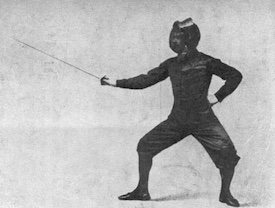Even I have been troubled by phase or even overall time shifts between gears making inaudible differences look huge in a null test, so we end up with the reversed issue of measured difference we can’t easily judge in term of audibility.
Yes but as you say, that’s the opposite of the claim of audible differences that can’t be measured. BTW, have you tried DeltaWave? It seems very good at auto alignment when nulling two different recordings. Down to an accuracy of 1/1000th of a sample apparently.
Most audible differences that can't be measured haven't even been proven conclusively to be audible differences yet.
I’m talking about audible differences and there are no “
audible differences that can’t be measured”. Audible differences that are inaudible are obviously not “audible differences”. What you’re talking about is entirely different, the misidentification of a psychological difference as an audible difference.
There’s an appealing logic to that. But it’s not true… at least if “measurable” means the measurements are doable.
Logically then, surely the opposite must be true; Dogmatrix’s statement IS true if the measurements are doable. So let’s look at your two examples:
If we didn’t know how to do a FT, we would have a recording of the signal, but no frequency response.
Firstly, obviously that’s a hypothetical, we do know how to do a FT, it certainly is “doable”. Secondly, I don’t claim to have sufficient math ability to fully understand Shannon’s proof of the sampling theorem but doesn’t it rely (at least indirectly) on Fourier? In other words, if we didn’t know how to do a FT, we wouldn’t have the sampling theorem, digital audio wouldn’t exist and therefore we would not “have a [digital] recording of the signal”?
Similar with TIM (transient intermodulation distortion), which was unknown before… somewhere around the 70’s. You could have recorded it, but without specifically looking for it, not known of its existence.
As I understand it, TIM shouldn’t be an issue with any reasonably competent design and arises in response to a test signal that probably never exists in music recordings. In other words, it’s existence wasn’t known because it probably didn’t exist (in real world music/sound recording and reproduction)! It was discovered by accident about 50 years ago when someone cross wired an amp. I assume you are referring to the fact that TIM is not revealed in a typical THD measurement and before the 1970’s TIM was not specifically measured. However, although the TIM test/signal was not done before the 1970’s it was certainly “doable” and, a null test would reveal TIM (if present). This brings us back to: What is published as specs and what is typically measured as opposed to what can be measured. Obviously, if something isn’t typically measured, that does NOT mean it cannot be measured.
So, as both your examples were/are in fact “doable”, then Dogmatrix’s assertion was true!
I could comprehend of things like beat frequencies happening as the result of reproduction and therefore not strictly speaking present in the recording/measurement
The beat frequencies are in the recording, except in the case of false/perceptual error “beats”, such as “binaural beats”. In which case, it’s not in the recording or the result of reproduction, it’s all in the mind of the listener.
G





















